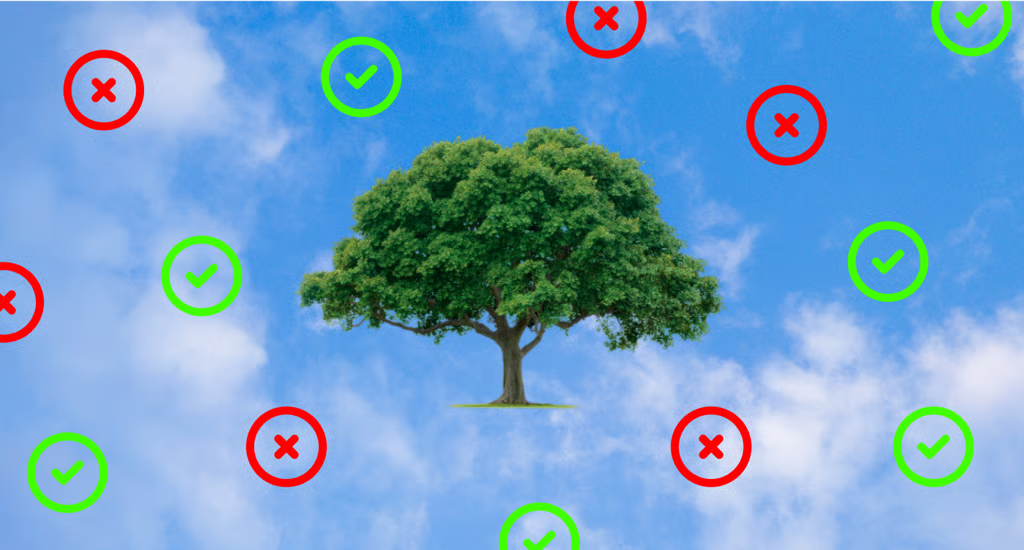AI for Sustainability: How Artificial Intelligence Will Transform ESG by 2030

AI for sustainability” has become one of the hottest topics on LinkedIn. Depending on who you ask, it’s either the tech that will save the planet — or the one that’ll take your job.
The truth? It’s somewhere in between.
By 2030, AI won’t have replaced sustainability teams, but it will have made their jobs look totally different. So let’s unpack what’s actually happening, what the future might look like, and what you can be doing right now to stay ahead.
Why Everyone’s Talking About AI for Sustainability
Right now, sustainability and ESG teams are part data engineers, part gossip hounds, part janitors — and that’s exactly why AI for sustainability is becoming essential. If you’ve ever felt like half your week is in “data hell,” welcome to the club.
I asked Tom, CEO of Futureproof, he says: The everyday tools we already lean on, like Google Search or ChatGPT prompts, are going to get upgraded. Instead of asking ChatGPT, “Can you summarise this PDF for me?”, in 2030 you'll ask something like, “Hey ESG agent, pull supplier X’s emissions data, flag any outliers, and draft the quarterly draft for my review.”
In other words: friction you feel today, all that data chasing, will be handled by AI systems behind the scenes.
.png)
According to McKinsey, AI for sustainability and business productivity could unlock up to US $4.4 trillion in value by 2030 — much of that from freeing people to focus on real impact, not spreadsheets.
So here’s the softer way to put it: AI doesn’t replace the passionate sustainability pros who care about people and planet. AI just stops making you waste so much time on admin so you can spend it on the things that matter.
From Reactive to Predictive
Here’s where things get interesting. Right now, most ESG work is reactive, a report deadline sneaks up, and suddenly everyone’s main job becomes chasing spreadsheets.
AI flips that.
As Tom explained, the next evolution of AI isn’t just about crunching numbers; it’s about preventing problems before they happen. Picture this: AI agents constantly scanning the news, cross-referencing supplier data, and nudging you when something looks off.
Imagine waking up to:
“Hey, one of your suppliers was flagged overnight for a labour rights issue. We’ve found an alternative that meets your sustainability standards — want to switch?”
That’s what Tom calls the preventative side of AI — where instead of firefighting, sustainability teams can focus on steering the ship. It’s like having a sustainability assistant who never sleeps, never complains, and doesn’t need coffee breaks. (watch the full discussion here.)
.png)
But Wait, Will AI Take My Job?
Short answer: no.
Long answer: not if you’re using it.
Tom’s take was pretty blunt on this one:
“If you’re not using AI, it’s going to be tricky to create enough value in your role to warrant being there.”
It’s not a threat, it’s a nudge.
When it comes to AI for sustainability, the goal isn’t to replace people — it’s to replace the parts of the job nobody likes doing anyway.
If you’re the kind of person who embraces tools that make your work smarter and faster, you’re safe. If you ignore them, well... let’s just say your future AI-assisted colleague might be delivering in an hour what takes you a week.
As Tom put it, the real question isn’t “Will AI replace me?” It’s “How can I use AI to make my work more valuable?”
What You Can (and Should) Be Doing Right Now
Even though 2030 sounds far away, this shift has already started. You don’t need to overhaul everything — just start experimenting.
1. Let AI Handle the Boring Stuff
Tools like ChatGPT or Claude can already do the unglamorous bits:
- Summarise dense reports (hello, 80-page sustainability PDFs)
- Clean up supplier data
- Draft follow-up emails
- Spot trends in employee surveys
You don’t need to hand over control — just hand over the admin.
2. Test a Few “Agents”
In the chat, Tom used the example of a sales development rep. That same idea applies to ESG. You can set up a sustainability agent that:
- Gathers supplier data
- Tracks legislation updates
- Monitors media for brand risks
It’s the same job flow you’d do manually — just faster, cheaper, and without the Sunday-night panic.
3. Keep the Human in the Loop
AI’s great at finding patterns, but it has no moral compass. It doesn’t understand your company’s values or cultural nuances. You’re the one who adds that layer of judgment and meaning.
As Tom put it, “AI can do 95% of the legwork, but it shouldn’t be making the final decisions.”
4. Get Curious
No one’s an expert yet. The people who will lead the sustainability space in 2030 aren’t the ones who already know everything — they’re the ones who are playing with these tools now.
Test, explore, and yes, sometimes break things (ideally not the production dashboard).
The Risks (Because we’re still in the real world)
Let’s be honest — this isn’t a silver bullet. There are some big watch-outs.
Energy use: all that computing power isn’t free. The Guardian recently reported that AI data centres could double global energy demand by 2030.
Bias and trust: AI still “hallucinates.” In plain English: it makes things up sometimes.
Ethics: AI might recommend cutting emissions in ways that ignore people — like slashing headcount to hit a carbon target.
Overconfidence: people who think they understand AI can be more dangerous than those who admit they don’t.
Tom said it best: even the smartest AI scientists argue about what happens next. So, stay cautious, stay curious, and keep humans firmly in charge.
So what does “good” look like in 2030?
If we get this right, 2030 will be the year ESG stops being a reporting chore and starts being a strategic superpower.
Every business will have its own sustainability agent running in the background — pulling data, creating reports, flagging risks. ESG teams will be freed up to do the fun stuff: shaping strategy, influencing leadership, and driving innovation.
Sustainability won’t live in a silo or a CSR PDF. It’ll live in real time, across every part of the business — marketing, operations, product, finance.
And yes, maybe we’ll even earn back a little time for that mythical three-day work week.
Because in the end, AI isn’t here to steal your job — it’s here to steal your spreadsheets
Curious how Futureproof helps companies use AI for sustainability to automate ESG reporting and compliance? Learn more here ➜
FAQ's
1. What is AI for sustainability?
AI for sustainability uses artificial intelligence to help organisations measure, report, and reduce their environmental and social impact more effectively.
2. How can AI improve ESG reporting?
AI automates data collection, identifies risks, and generates reports, allowing ESG teams to focus on strategy rather than admin.
3. What are the risks of AI in sustainability?
Energy use, data bias, and ethical trade-offs remain major watch-outs as AI becomes embedded in sustainability work.
.svg)

.png)
.png)
